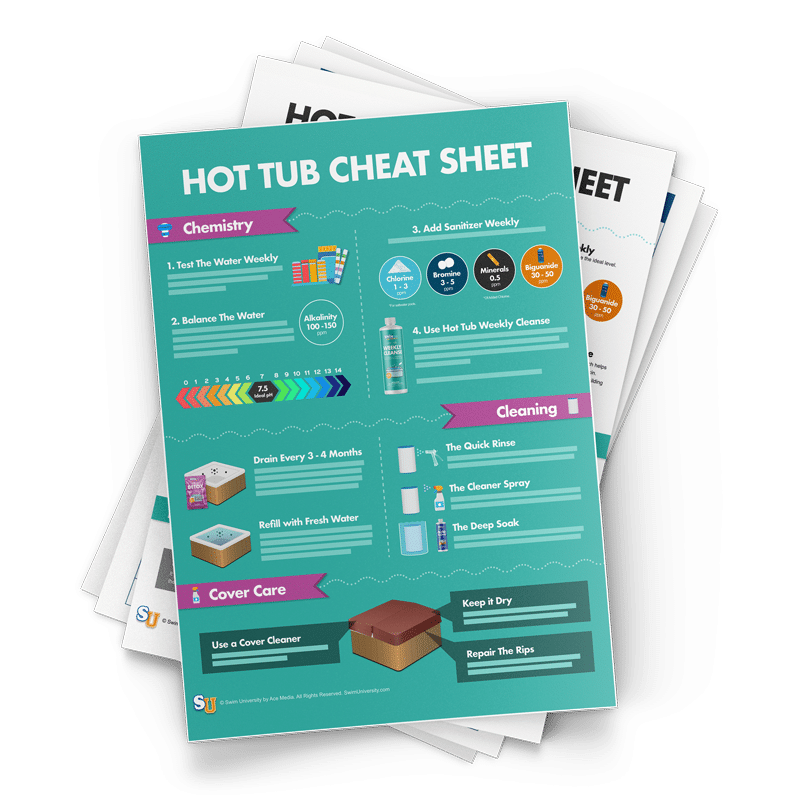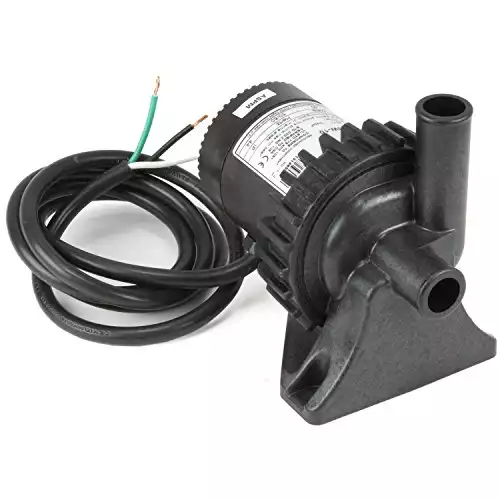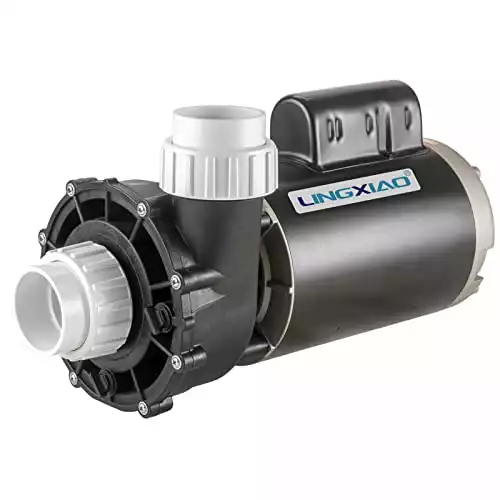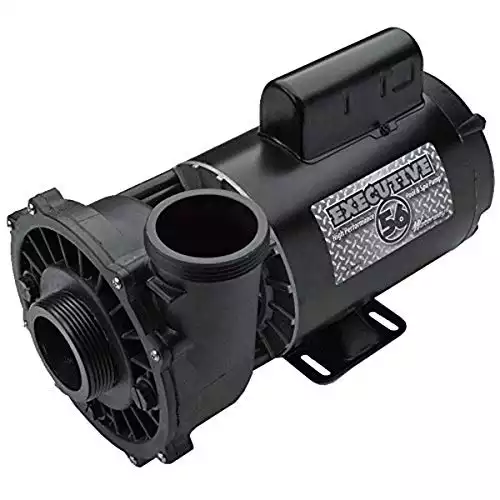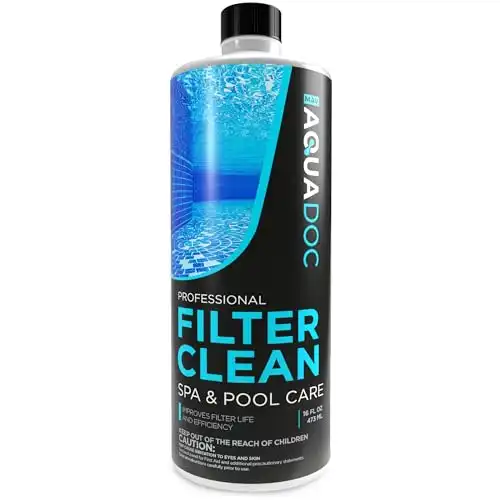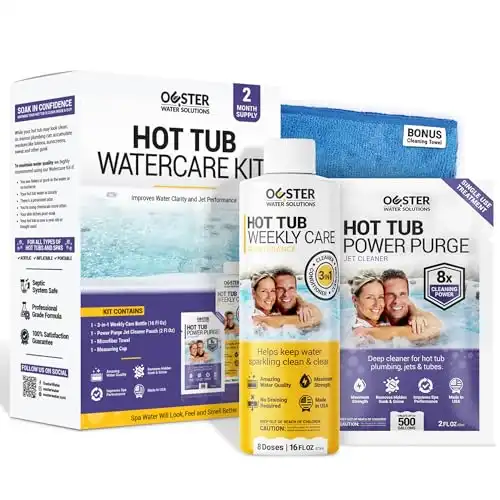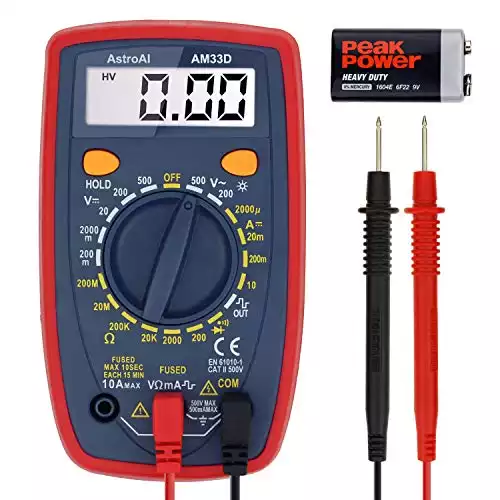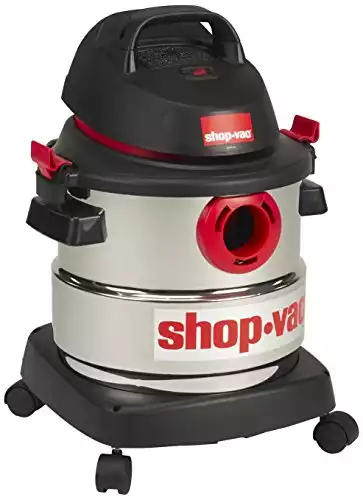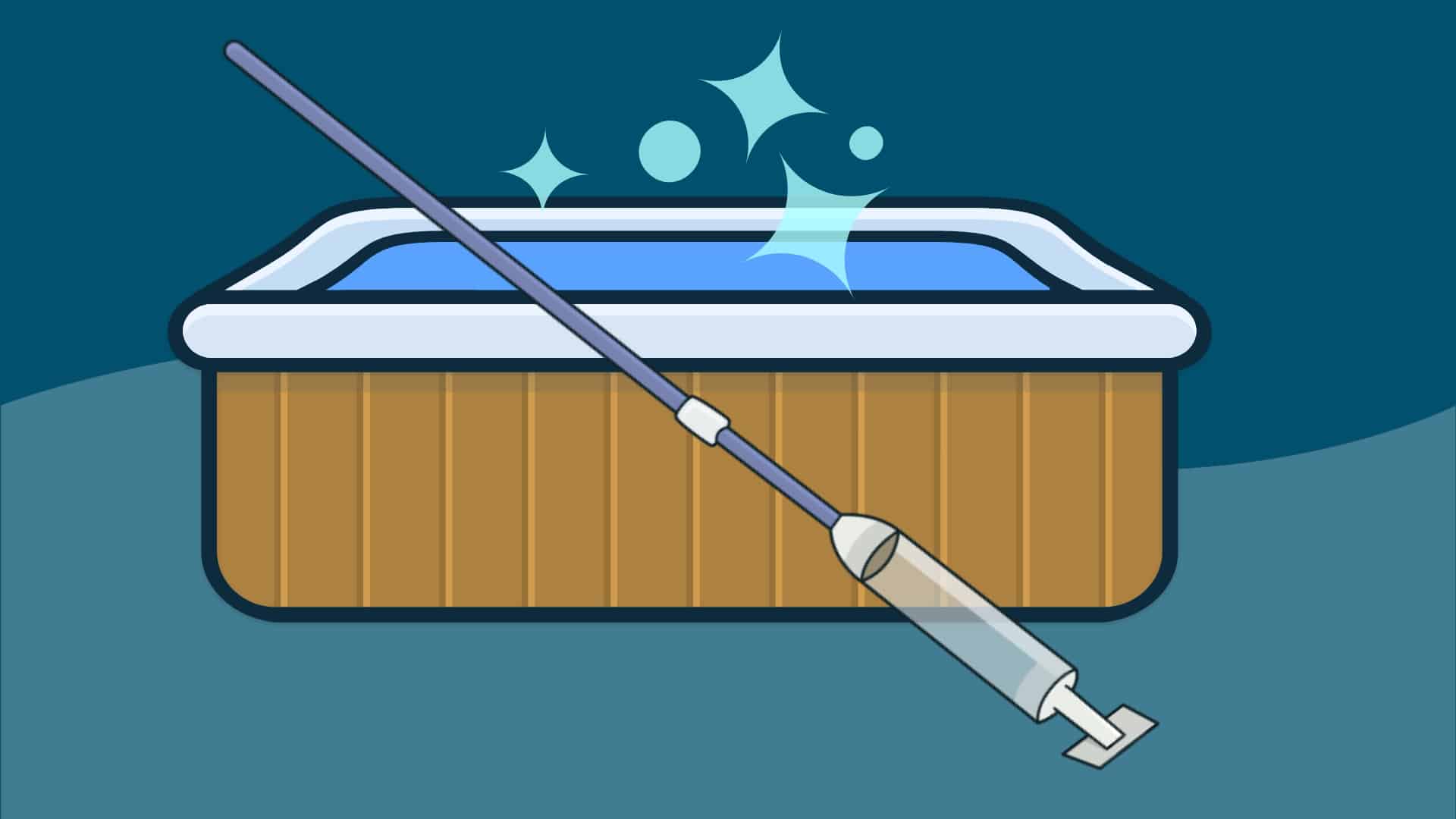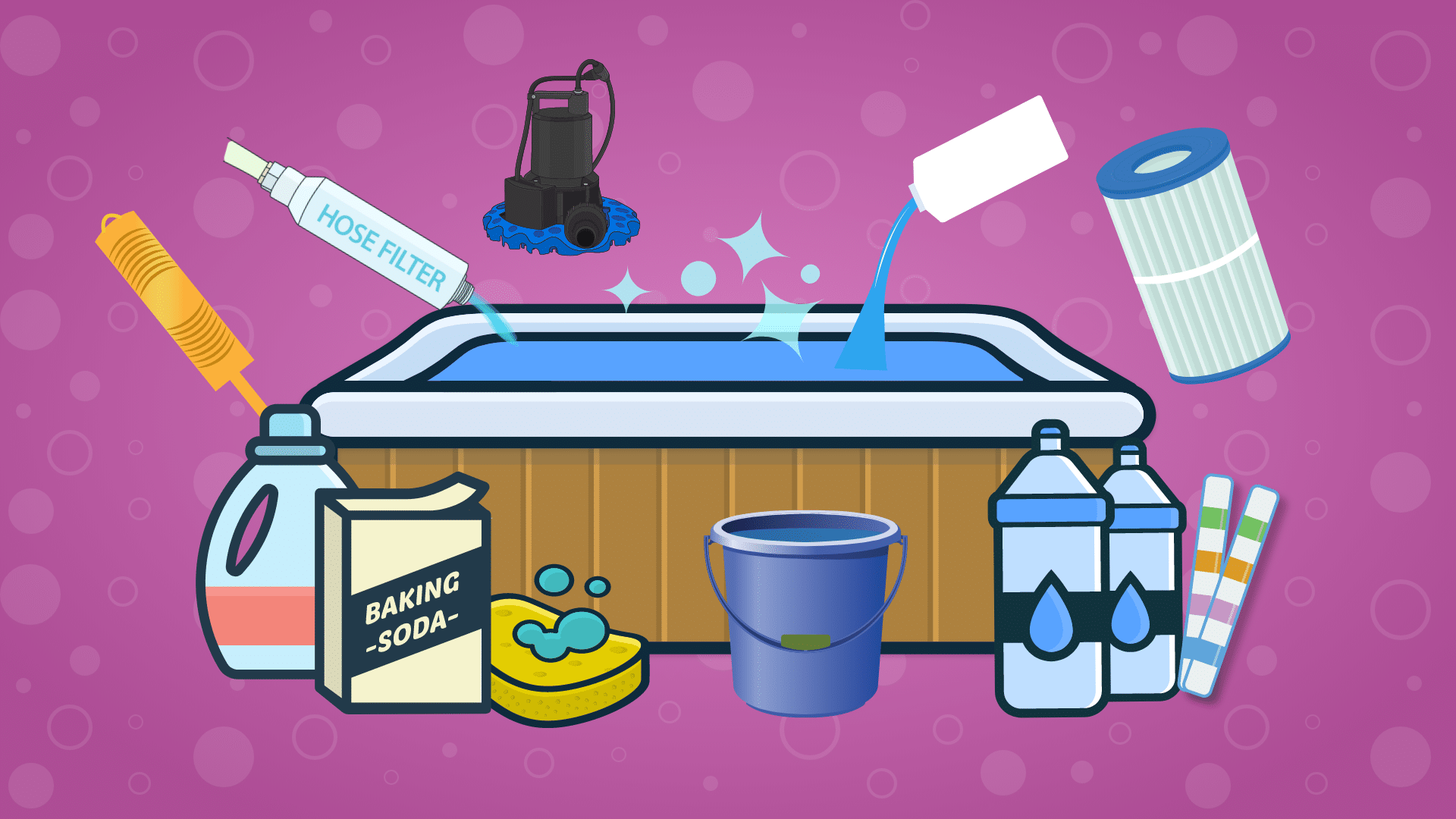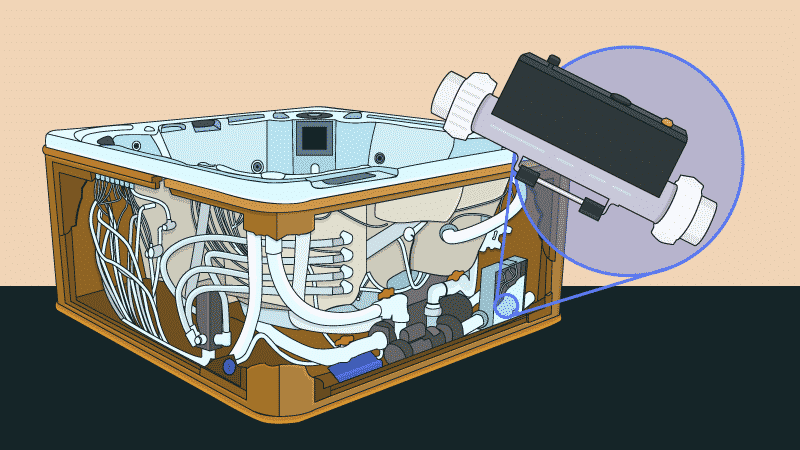The Complete Guide to Hot Tub Pumps
You turn on your spa and hear a screeching sound. Your jets kick on, but barely any water comes through them. Or the unimaginable—you turn on your spa, and absolutely nothing happens.
It’s important to know how to spot signs of trouble, what steps to take to circumvent preventable problems, and what to do when they crop up.
What’s in a Hot Tub Pump?
Before you try to fix or replace a malfunctioning pump, familiarize yourself with the specifications of your hot tub pump. Most pumps have a label on the side listing the most important technical aspects, such as horsepower (HP) and speeds. Other specs, such as discharge type and size, can be determined just by looking at your pump.
Variable or Single Speed
Every hot tub needs a pump that can power the jets and circulate the water. This means it needs both high and low speeds, which are measured in revolutions per minute (RPM). When a single pump can switch between high and low speeds, it’s called a variable-speed or two-speed pump.
Some hot tubs have single-speed pumps, but in those cases, there are two pumps. One is called the circulation pump, which runs at a much lower speed and uses less energy than any other pumps. Circ pumps, as they’re commonly called, only move between 25 and 35 gallons per minute (GPM).
Even small variable-speed pumps typically move 100 GPM or more. The most powerful variable-speed hot tub pumps can move as much as 260 GPM.
The second pump would function at a higher speed to power the jets in your tub. These can be single or variable speed. Some two–speed pumps can even be configured for single-speed use in a spa that has a circ pump.
Wet and Dry Ends
If water were to enter the motor portion of your spa pump, it could destroy the pump completely. In order to keep it moving water without frying the motor parts, every pump has a wet end and a dry end.
As you can surely guess, the wet end houses the impeller which pushes water through your spa circulation system. The dry end contains the motor in a sealed housing that protects it from moisture. Each end contains parts that can malfunction and cause pump problems.
For example, if your impeller gets stuck due to residue, you’ll see flow problems. If there is a short in the motor wiring, it could cause your breaker to trip, seemingly at random. When one component has a problem, it’s possible to repair each end separately. But most of the time, it’s less expensive to just replace the broken pump entirely.
Voltage
The motor in your spa pump needs power to function. It’s important to determine whether yours requires 110–120 volts or 220–240 volts. If your pump has only two wires powering it, it’s 110–120 volts. The two wires are typically green and white.
If it has four wires, then it’s 220–240 volts. The wires would be green, white, black, and red. If your pump has a label on the side, the voltage should also be listed there.
Tip: When replacing your hot tub pump, save the power cord from your old pump (if it’s operational) to use on the new one. Even if your new pump comes with a power cord, it’s always good to have a spare.
Horsepower
Just like the imaginary horses in your car engine, the horsepower (HP) in your hot tub pump refers to how much power it provides. Spa pumps vary widely from ¾ HP all the way up to 5 HP.
However, you can’t just pop a 5 HP pump into any spa and expect stellar jet action. That power must be accommodated by appropriate plumbing. Too much power through too-small pipes will limit power and could even cause leaks.
You’ll also find that the HP rating on pumps can be a bit bloated, especially if yours is marked with SPL, which means it has a special (read: inflated) rating. This process of noting the HP a pump can achieve in the factory—but not in your spa—is called up-rating.
Discharge
The location on your pump where water exits is the discharge orientation, and it will either be in the center (on top) or on the side. Most pumps let you turn discharge to orient it however your spa requires. You’ll be able to tell which one your pump is just by looking at it.
Tip:Some pump brands use non-universal fittings for the discharge. If this is the case with your new pump, you’ll need to replace the unions when you install the pump.
This is a 2-speed pump that takes 240 volts and pumps out 4 horsepower.
Frame Size
The housing around your pump includes pre-drilled holes where it will be bolted into place inside your spa. The holes are farther apart or closer together depending on the size of the frame, so if you choose the wrong size frame, you won’t be able to attach it properly.
Hot tub pump frames are either 48 or 56. You should be able to find one of those numbers on your pump’s sticker. If not, you can simply measure between the bolts on the frame, or on the motor. If the bolts are closer than 4 inches, it’s a 48 frame. If the distance is more than 4 inches, it’s a 56 frame.
How to Prime Your Hot Tub Pump
When you add water to an empty spa, air can get stuck in your circulation system. Priming your pump pushes that air out so water can circulate correctly. You’ll need to prime your pump before using it the first time, after refills, and as needed in between.
Even self-priming pumps may sometimes need a helping hand. As the priming process differs slightly from model to model, you’ll want to check your manual for specifics. The two basic methods are easy to do.
Control Panel Priming
With the push of a button (or a few pushes of a few buttons, really), you can get your pump ready to rock.
- Find priming mode on your control panel (if it’s available).
- Turn your jets on low for 10–20 seconds.
- Switch your jets to high for another 10–20 seconds.
- Repeat until the water pressure is normal and jets are working without any gurgling or air bubbles.
Manual Priming
If the first method didn’t work, you can use your pump’s bleeder valve to get rid of air.
- Flip your circuit breaker to avoid accidental contact with electricity from your pump.
- Access your hot tub pump and close the gate valve on the discharge side.
- Slowly turn the bleeder valve until you hear air hissing out.
- Once the sound stops, tighten the valve back up. If you don’t tighten it, water can leak here and cause problems, so be sure to replace it properly.
- Turn your breaker and spa back on to check the jets.
More Priming Tips
If you’re still having problems after priming your pump, you can try a few other tactics:
- Give your filter a good cleaning and check for other water flow issues such as clogs or possibly even leaks.
- Double check your water level to make sure the tub is filled properly. If the water level is too low, you may have problems with water flow.
- Don’t give up after one priming try. Sometimes it takes multiple tries through each of the priming steps to properly prime the pump.
- Never run your pump for more than 2 minutes if you aren’t sure that it’s filled with water. This could damage the pump.
Soak your hot tub filters in this deep-cleaning solution, rinse with water, and your filters will look brand new in 24 hours!
Troubleshooting Your Hot Tub Pump
When something is clearly going awry with your pump, you can try a few simple things to narrow down—or even fix—the problem on your own.

Pump Won’t Prime
If you hear gurgling, bubbling noises, it may indicate trapped air trying to escape your jets. This most commonly occurs right after refilling your spa. If you don’t hear those noises, the more likely cause is debris in your filtration system, leaving your hot tub gasping for air.
Clean your leaf trap and filter first, then try priming the pump. If the problem persists, you can “burp” the rest of the air out of your spa by turning the jets on and off.
- Turn down the heat so it won’t keep trying to run.
- Open all the jets fully.
- Run the jets on high for about 15 seconds.
- Repeat the jet bursts three times, increasing the run time by 10–15 seconds each time.
- When air bubbles out of the jets, leave them on until the bubbling stops.
No Water Pressure
Water not moving properly? Trapped air, lack of pressure, or a pump that won’t prime may be the culprit. All of those problems can sometimes be solved by simply making sure nothing is physically impeding your circulation system.
First, clean your filter and leaf traps. If you’ve noticed seriously poor pressure, fully drain and clean your hot tub. Be sure to start with a line flush product to purge your circulation system of any gunk. Also, make sure all the jets are fully open before you begin the cleaning process.
Fresh water, a deep clean, and dedication to water maintenance and hot tub cover use can go a long way toward preventing spa problems and solving water pressure issues. But if you haven’t found any physical reason for your water pressure to struggle, your pump might need further inspection.

Our hot tub kit makes taking care of your water easy. It includes Hot Tub Weekly Cleanse, Detox, and Filter Cleanse to use every 3-4 months for deep cleaning.
Motor Turns On and Off
A common symptom of a motor in its death throes is random power loss. If the temperamental motor doesn’t start behaving with a simple breaker reset, it could be faulty wiring or the motor itself.
If you’re comfortable doing so, you can use a multimeter to check whether the wiring is actually delivering steady power to the motor. If it’s not, you’ll need to clean off any corrosion, or possibly even replace the wiring. If the wiring is corroded, look for leaks.
If the problem appears to be internal, you’ll may need to replace the motor entirely. As always, if you’re not experienced in handling electrical repairs, have a pro test your motor and replace the wiring for you.
Motor Runs, But Nothing Happens
If you can turn everything on, but your water isn’t circulating, you could have a stuck impeller or a clog somewhere in your circulation system. Grinding noises are a hallmark sign your impeller isn’t rotating properly due to residue or electrical issues.
Clean your filter and leaf traps. Flip your GFCI (ground fault circuit interrupter) to cut off all power to your pump, then check out your impeller. If you find anything gunking it up, clean it off, and try your pump again.
A damaged impeller may also fail to turn properly, which may require you to replace the impeller itself. Otherwise, your motor may be irreparable and need to be completely replaced.
Pump Doesn’t Operate
If you can’t turn your pump on, you can’t enjoy your spa. Is your control panel inoperable, too? You’ve got no power coming to your spa.
Simple. Reset your breaker!
- Locate your breaker box (usually a metal box mounted on a post or the side of your home, a few feet away from your spa).
- Open it up, and note whether the hot tub breaker has tripped on its own already, as this could indicate other problems in your spa or with the breaker itself.
- Flip it off, then back on again.
- Try to start up your pump. If you’re lucky, this might be all you need to do.
If the breaker flips when you start up your pump, disconnect the pump and reset the breaker.
If it does not trip without the pump connected, you know the problem is caused by the pump.
If it does trip, your pump is probably fine, but you’ll need to troubleshoot the breaker itself or call a pro to take a look at your spa’s electrical components.
Water Leaks
Of course you want water inside your hot tub. But water inside your spa cabinet or near your GFCI is far less of a good thing. Leaks may cause your hot tub pump to malfunction. They can also trip the hot tub breaker, fry your motor, and rust or corrode electrical components.
Leaks can start out slow inside your cabinet and remain unnoticed until they’re a huge problem. Make a habit of looking for moisture around pump seals before the problem grows.
Grab a flashlight, open your spa cabinet and take a look around. If you see any moisture, locate the source. It could be as simple as a worn out union. You may also find a crack in the spa or your impeller housing. Cracks are more likely if your hot tub has recently experienced a freeze.
You’ll not only want to repair the source of the leak, but check to see whether water has destroyed any electrical components inside your spa. You may need to clean off some corrosion or replace wiring to get your pump working properly again.
Pump it Up!
If your hot tub pump is beyond repair, a replacement will get your hot, bubbly spa water pumping once again. Not all pumps are created equal. In fact, some won’t even fit where your old pump did. Others have brand-specific connectors.
Make sure you know what to look for to choose the best replacement hot tub pump.
This is a 2-speed pump that takes 240 volts and pumps out 4 horsepower.
What Size Hot Tub Pump Do I Need?
If you’re wondering how you’ll determine which size spa pump you need just by looking at the old one, don’t sweat it. First, look for the sticker on your old pump to determine the specifications. If there isn’t one, you can get the information yourself.
- Frame Size: Measure between the bolts. Remember, fewer than 4 inches is a 48 frame, and greater than 4 inches is a 56 frame.
- Speed: Determine how many GPM you need for your jets to function optimally by multiplying the number of jets your spa has by their flow rating. You may also contact your spa manufacturer for these details.
- If you can adjust jet intensity and circulation you have a variable-speed pump. These pumps will also show two different amperages on the data sticker.
- If you have separate circulation and jet settings (two pumps), your pump is likely single speed.
- Voltage: If your pump has two wires in the power supply, it’s 110–120 volts. If it has four wires, you need a 220–240 volt pump.
- HP: Overdoing it with HP can cause trouble, so stick closely to your original pump’s horsepower. The general rule of thumb is not to increase by more than 1 HP over the original.
- Plumbing Size: Measure the diameter of the PVC pipes going to your pump discharge and intake to determine which size unions you need.
Installing Your New Spa Pump
If you make sure you buy the correct replacement pump, and you don’t have any other problems with your spa, installing the replacement pump is fairly simple.
Important: Be sure to flip the breaker before you begin so you won’t get shocked. Safety first!
- Close the valves or drain your spa, so all the water won’t run out when you remove the pump.
- Be prepared with some towels or a Shop-Vac because a few gallons from the pipes will flow out.
- Detach the copper grounding wire.
- Loosen the intake and discharge fittings.
- Remove the bolts in the frame.
- Gently move the pump so you can reach the wires and detach them.
- Wire the new pump properly.
- Tighten the fittings, first replacing unions and O-rings if necessary.
- Bolt the frame in place
- Refill your spa and test out your new pump.
A shop-vac is essential for removing water from your hot tub or pool.
Don’t Be A Chump, Take Care Of Your New Pump
Your hot tub pump is the thing that makes your spa a spa, rather than just a big bathtub you share with others—awkward. It’s natural for them to wear out and need to be replaced over time, but if you take care of your pump, it’ll keep your jets massaging for a good, long time.
Also remember to keep up with cleaning debris from your spa and leaf basket, balance your water chemistry regularly, and avoid ever letting your hot tub freeze up. When you notice something amiss, repair it right away so problems won’t have the chance to compound. Make those simple practices part of your routine and you’ll enjoy worry-free soaking for years to come.
Happy Soaking!
3 More Ways We Can Help With Your Hot Tub
- Hot Tub Cheat Sheets (Free): Easy-to-use guides to help you keep your hot tub water balanced and sanitized.
- The Hot Tub Handbook: An illustrated guide to DIY hot tub care, including water chemistry, maintenance, troubleshooting, and more.
- The Hot Tub Care Course. You’ll get step-by-step videos and a step-by-step downloadable guide with everything you need to know about hot tub maintenance.
